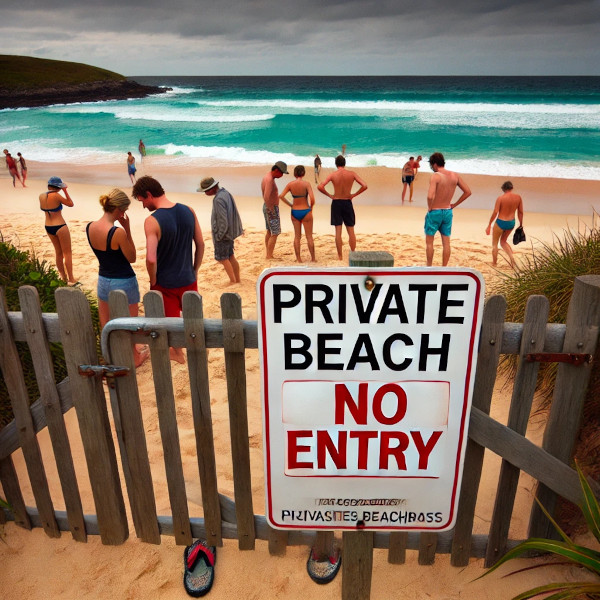A beach is a place of freedom and open sky. The ocean touches all and belongs to none. In Australia most beaches are public under the law.
Private beach access remains a contentious issue for surfers and beachgoers alike. Landowners sometimes claim exclusive rights over sections of coastline. They block paths they erect fences they put up signs.
The law in Australia generally supports public access to beaches. Coastal waters are public under common law principles. The foreshore between high and low tide is public land in most cases. Access can still be restricted by private property boundaries.
Some landowners try to prevent people from reaching the beach. They may own land that leads directly to the sand and water. They may attempt to close off accessways that have existed for decades. Their fences gates and barriers create conflict with the public interest.
If a pathway has been used for years a legal challenge can be made. A right of way may exist under easement laws. Easements allow public access across private land in certain situations. Proving an easement requires legal evidence of long-term use.
Local councils have authority over beach access in many regions. They regulate pathways and public entry points. A person facing blocked access can contact the council for assistance. Councils may issue removal orders for unlawful fences or signs.
If a council fails to act further steps can be taken. State governments have jurisdiction over major public access disputes. Some states have specific laws protecting beach access rights. Public campaigns and legal petitions can pressure authorities to intervene.
Challenging private beach access requires community support and legal arguments. Public protests can draw attention to unfair restrictions. Surfing and environmental groups often support legal action against unjustified blockages. Councils listen when communities push back against exclusion.
Historical records can help prove public access rights. Old maps and documents may show traditional pathways. Witness statements from longtime residents can support legal claims. Landowners cannot simply erase public rights with fences and locked gates.
Legal action can be expensive but sometimes necessary. If a landowner refuses to open access a court case may follow. The law often sides with the public when longstanding paths are blocked. The courts assess whether access has been unlawfully denied.
Government policies also influence access disputes across the country. Some states have stronger protections for public beach entry. Tasmania and Victoria enforce public access laws more strictly than some other states. Legal strategies must align with regional regulations and precedents.
Surfing communities are particularly affected by access restrictions. Famous surf breaks may be near private properties. Locals and visiting surfers must navigate complex legal landscapes. Fighting for fair access is part of maintaining surf culture in Australia.
Media coverage can help expose unfair private beach claims. Newspapers and television reports bring attention to blocked public pathways. Online petitions and social media campaigns increase pressure on authorities. Public support often forces landowners to reconsider their restrictions.
Challenging private beach access is not always easy but it is possible. The law generally supports open coastal access when challenged in court. Persistence and community action often lead to positive outcomes. Australians have a strong history of defending public beach rights.
A beach is not just for one person but for all. The waves keep rolling the tide keeps shifting. The land meets the sea and the people walk free.


Leave a Reply